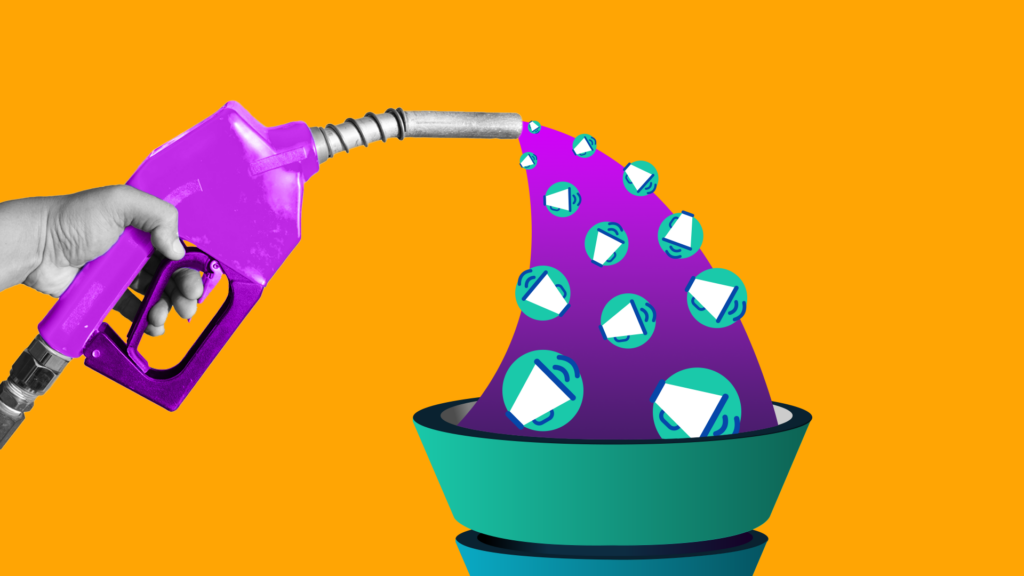Blast From the Past: Streaming is Reviving the TV of Old
by Frankie Karrer
4 Min Read
CES 2024: Stagwell (STGW) and MNTN Announce Partnership in Unified Performance SolutionsLearn More

8 Min Read
For a business owner like you, the basic goal of sales and marketing is simple: increase your sales, increase your revenue. In the past, you might’ve thought about sales and marketing as separate functions. Your teams would work in silos, never speaking to one another (or worse, getting in territorial scuffles on the reg). But these days, you’re living in the modern world, like everyone else. Today, you know that if you want to build a trusting relationship with your customers, your approach to sales and marketing is going to need a little more cohesion.
While sales and marketing are indeed interrelated, they do have different objectives. Your marketing team’s job is to create awareness and solidify your brand image in customers’ minds. Once a customer becomes aware of your brand and moves closer toward making a purchase, that’s when your sales team takes over, building on that initial familiarity to bring the sale home.
Knowing the difference between the sales funnel vs. the marketing funnel—i.e., the stages of each of the processes outlined above—can help you develop targeted ads and sales campaigns that help you meet those big goals. Here’s how to tell the difference.
The marketing funnel happens before the sales funnel even comes into play. It consists of all the activities you do to build awareness of your brand and attract people to the sales funnel. Funnel building helps generate interest, promote your brand, and build your reputation.
A marketing funnel has four stages:
Marketing activities vary based on which stage a customer is in the funnel. You need to stand out from the competition to appeal to customers at the top of the marketing funnel. You can do so by knowing your target market and getting creative with your ads.
Customers at the top of the funnel either don’t know much about your brand, or don’t know it at all. You can overcome this hurdle by doing market research and creating ads that highlight the benefits of your products as part of a demand generation initiative.
Top-of-the-funnel activities include search engine optimization, pay-per-click advertising, social media engagement, and other marketing activities aimed at building awareness.
To engage customers at the conversion and loyalty stages, you need more targeted content that speaks specifically to their needs. At these stages, consider content marketing, targeted ads, and nurturing campaigns designed to keep you at the top of customers’ minds.
A sales funnel is a visual representation of your customer’s buying journey. To enter the sales funnel, your prospective customer has to become aware of your business and do some preliminary research on your brand. At this stage, they know they might have a need for your product or service, and they’re starting to evaluate their options on a deeper level.
A sales funnel has five stages:
Once you’ve qualified leads from your marketing efforts and determined that they’re interested in making a purchase, you can use various strategies to push a prospect toward a sale. These vary based on whether the prospect is at the top of the funnel, in the middle, or at the bottom.
Simply put, the main difference between the two boils down to each funnel’s end goal. With the marketing funnel, your goal is to cast a wide net and draw potential customers to your brand. Meanwhile, your sales funnel goal is to convert prospects into customers. Learn more about the benefits of a sales funnel.
Today’s customer is more informed than ever, and they are constantly being bombarded with ads. The average American sees between 4,000 and 10,000 ads per day, and customers today are less likely to respond to a hard sell.
By aligning your sales and marketing funnels and creating a full-funnel marketing strategy, you can develop a better understanding of leads and potential customers at all stages. You can also tailor your messaging to communicate how your business will meet their needs.
Give your sales and marketing teams room to operate holistically, as this also provides cross-functional learning opportunities. A salesperson sharing notes from a pitch might offer insights into pain points the marketing team hadn’t previously considered. The marketing team can then offer the sales team information into what types of content generate the most interest, helping the sales team craft personalized sales pitches.
Connected TV (CTV) advertising offers you the reach of traditional television advertising, combined with precision targeting and accurate measurement and reporting. You can use CTV ads to target potential customers no matter where they are in your sales and marketing funnel.
MNTN’s performance marketing platform offers tools you can use to optimize your campaigns based on your target audience. You can launch ad campaigns for prospecting and awareness to fill your marketing funnel or switch up your strategy to target people in the middle and at the bottom of the sales funnel.
Our CTV platform even integrates with your website, so you can effectively retarget current and potential customers based on how they interact with your brand.
Learn more by requesting a demo today.
Marketing and sales funnels may work together, but they have different objectives. A marketing funnel helps you locate the right customers and attract them to your brand, whereas a sales funnel helps you build relationships with people who already know you to show them why your brand is right for them.
By aligning both funnels, your sales and marketing teams can successfully convert more customers, getting you to those big goals: increase your sales, increasing your revenue, and ultimately, growing your business.
Subscribe to the report Apple, Amazon, NBC and more use to get their CTV news.